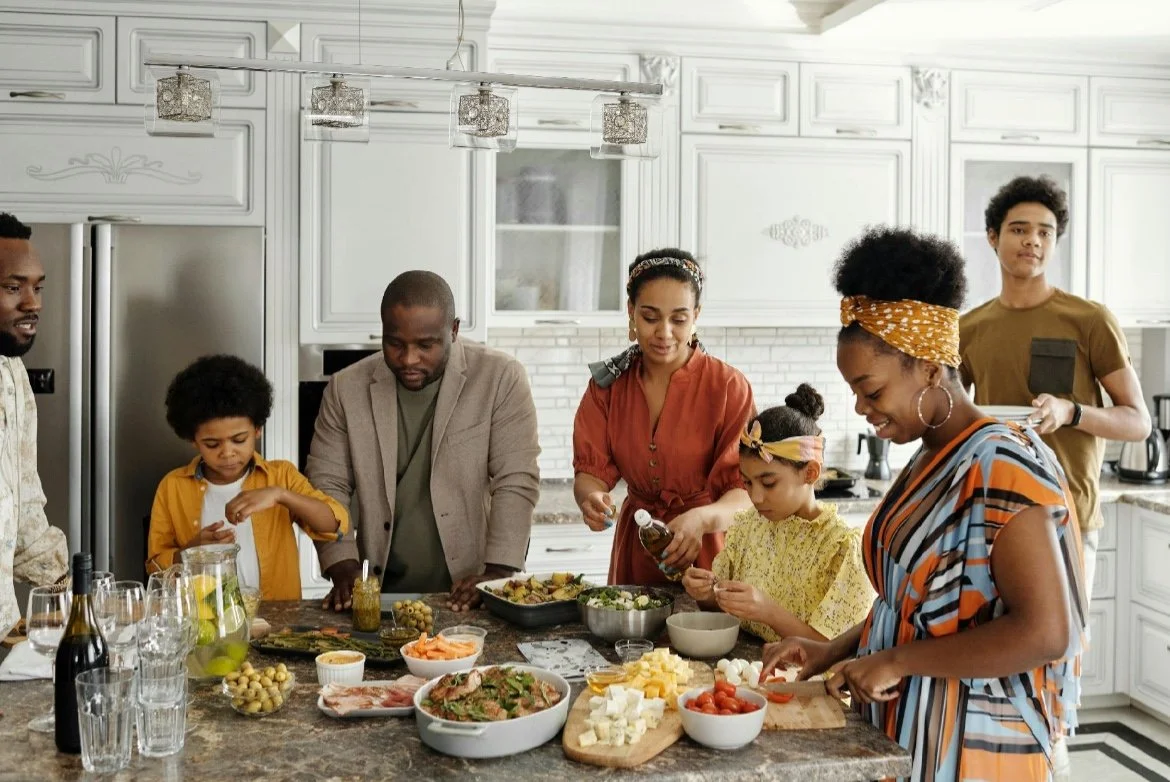How to Streamline Your Multigenerational Home for Grandparents, Parents, and Children Alike
Guest Post by Cherie Mclaughlin
A multigenerational household can be a beautiful blend of shared wisdom, childhood energy, and familial continuity. But it can also feel like a minefield of mismatched expectations, overlapping needs, and space constraints if you're not thoughtful about how it's set up. Living under one roof with grandparents, parents, and children requires more than goodwill—it demands design intention, emotional fluency, and daily rhythms that serve all. Whether you’re already sharing a home or planning to merge generations, here’s how to make the experience work—not just functionally, but meaningfully.
Design Spaces for the Whole Family
Harmony starts with the floorplan. A multigenerational home needs more than square footage—it needs zones. Shared areas like kitchens and dining rooms can become joyful hubs, but without boundaries, they can turn into battlegrounds. Layouts that consider noise levels, accessibility, and mobility needs are game-changers. Thoughtful features like designing spaces for the whole family include locating main-level suites for elders, building adaptable dens, and layering privacy with furniture placement instead of just drywall. These decisions aren’t about perfection—they’re about empathy built into architecture.
Keep Clutter From Becoming Emotional
When three generations occupy the same home, clutter isn't just visual—it's emotional. Toys, medical supplies, inherited furniture, and nostalgic keepsakes can accumulate quickly, and every item seems to hold meaning for someone. That’s where customized decluttering and organizing services come in—not just to make a home look neater, but to offer a neutral third party who can guide sensitive conversations about what stays, what goes, and what simply needs a better home. Organized spaces allow family members to focus on shared memories and relationships, rather than daily friction over “stuff.”
Don't Let Broken Appliances Break the System
With more people sharing the same kitchen, bathroom, and laundry, even a single appliance failure can derail the day. And when you're managing care for kids and aging parents at the same time, that disruption carries a bigger cost. A broken dishwasher or fridge doesn't have to spark logistical chaos or intergenerational blame. Many families proactively invest in an appliance warranty for essential household items to keep breakdowns from becoming breakdowns—logistical or emotional. With coverage in place, repairs become a phone call, not a debate.
Handle Conflicts Before They Become Patterns
Emotional labor builds up in invisible ways. When generations differ in values or expectations—especially around parenting, discipline, or household roles—tiny misunderstandings can calcify into bigger tensions. That’s why families benefit from grounding their routines in process, not just feelings. Establishing weekly family check-ins or informal debriefs creates room for everyone to express needs before they boil over. Some families have found success using effective conflict resolution strategies for families that include neutral meeting zones, agreed-upon boundaries, and modeling how to pause instead of push when emotions run high. Peace doesn’t happen naturally—it has to be rehearsed.
Protect Privacy and Independence With Design
More families are now opting for floorplans that include separate wings, especially when remodeling or building new. Togetherness shouldn’t mean constant proximity. The best multigenerational homes give everyone a chance to retreat without guilt. This could look like a basement suite with its own entrance, a garage conversion with a kitchenette, or even separate bathrooms on each level. These physical cues communicate respect for autonomy. One parent put it best: “I love having my dad close—but I don’t want to be in his routine, and he doesn’t want to be in mine.” That boundary, honored in design, is a form of love too.
Respect Rhythms and Preferences
Shared space doesn’t mean synchronized living. In multigenerational homes, a lot of resentment stems from mismatched rhythms—late-night TV clashing with early morning routines, or a toddler’s nap overlapping with Grandpa’s favorite time to vacuum. The key is naming the needs before they get violated. If the household can get in the habit of honoring different sleep and meal preferences, everyone feels less surveilled and more seen. It's not about rigid scheduling—it’s about preempting unnecessary friction by assuming difference rather than sameness. Grace lives in the gaps between people’s natural timing.
Build Self-Care Into the System
Being under one roof doesn’t mean being available 24/7. The caregivers—whether they’re young parents or adult children supporting aging parents—often bear the brunt of invisible exhaustion. And it’s not just physical; it’s identity-level. Making time for exercise, hobbies, or even just solitude isn’t selfish—it’s self-preservation. If self-care is part of the home’s architecture—spoken aloud, tracked, respected—then no one has to beg for it later. Many find that balancing self-care with shared responsibilities is only possible when it's seen as essential, not extra.
Living with multiple generations can be a gift—but only when it’s a system built for mutual respect, autonomy, and daily grace. That means treating space as sacred, emotions as infrastructure, and conflict as a signal—not a threat. These homes work best when every voice is honored and no one is reduced to a role. Children learn interdependence. Grandparents regain purpose. Parents feel supported rather than sandwiched. With the right balance of design, communication, and empathy, a multigenerational household doesn’t just function—it flourishes.

